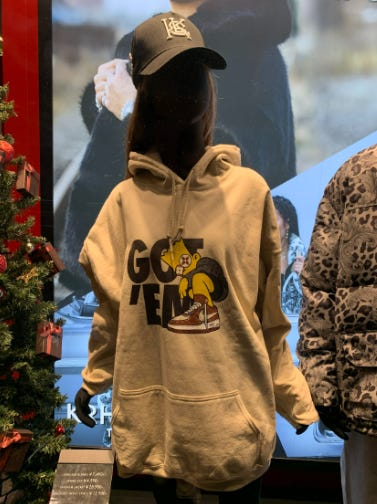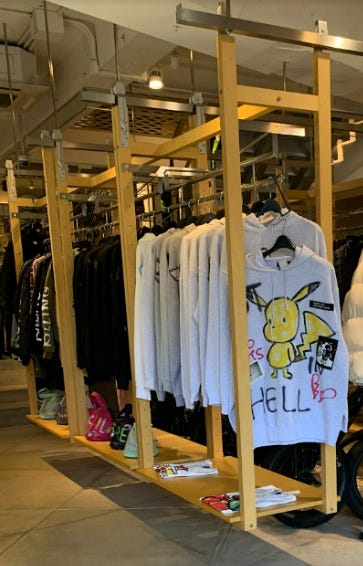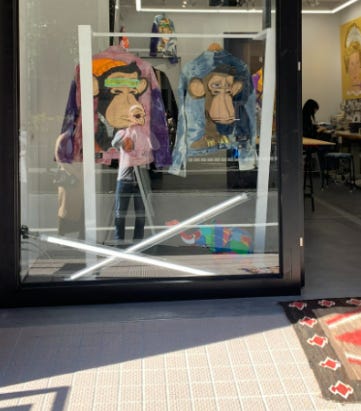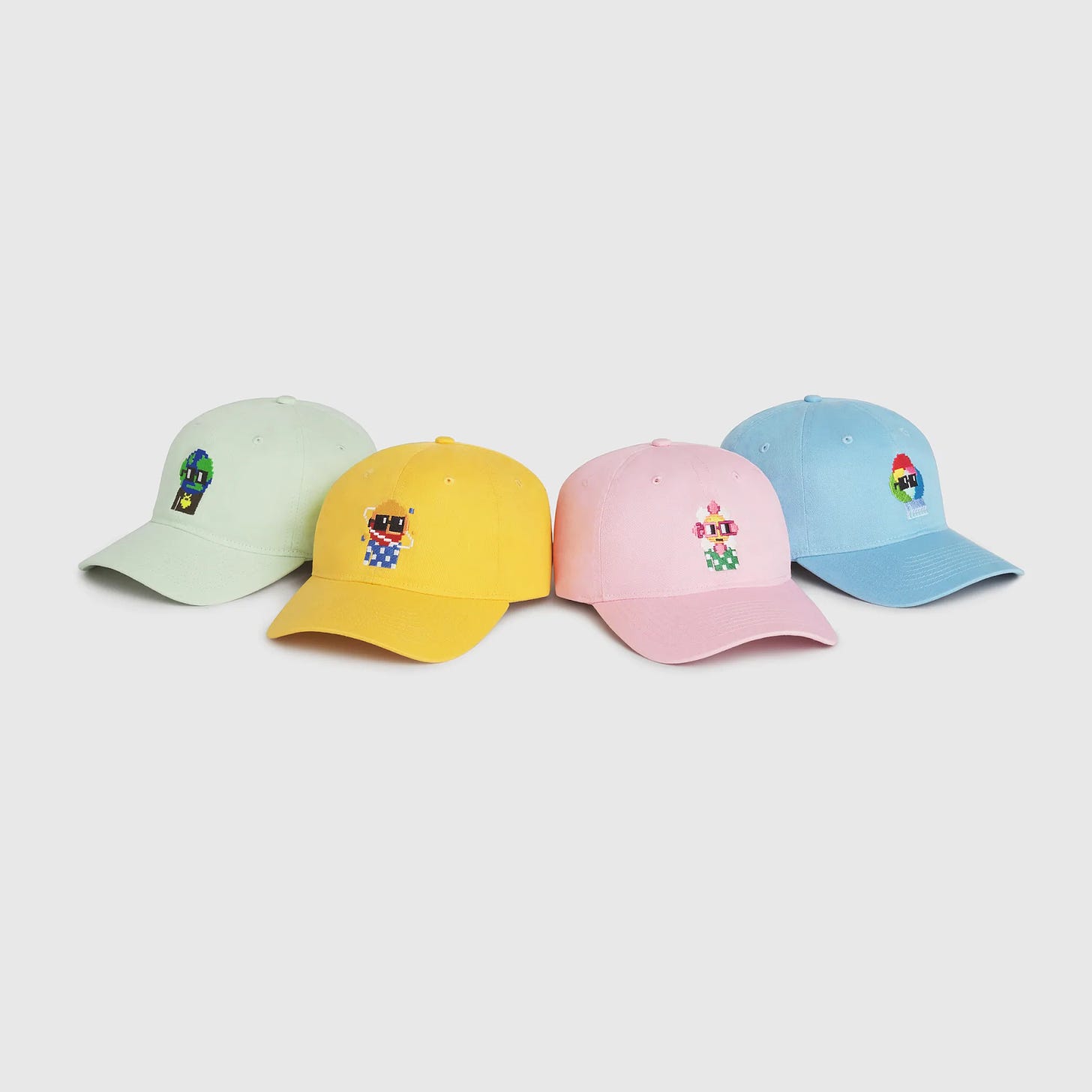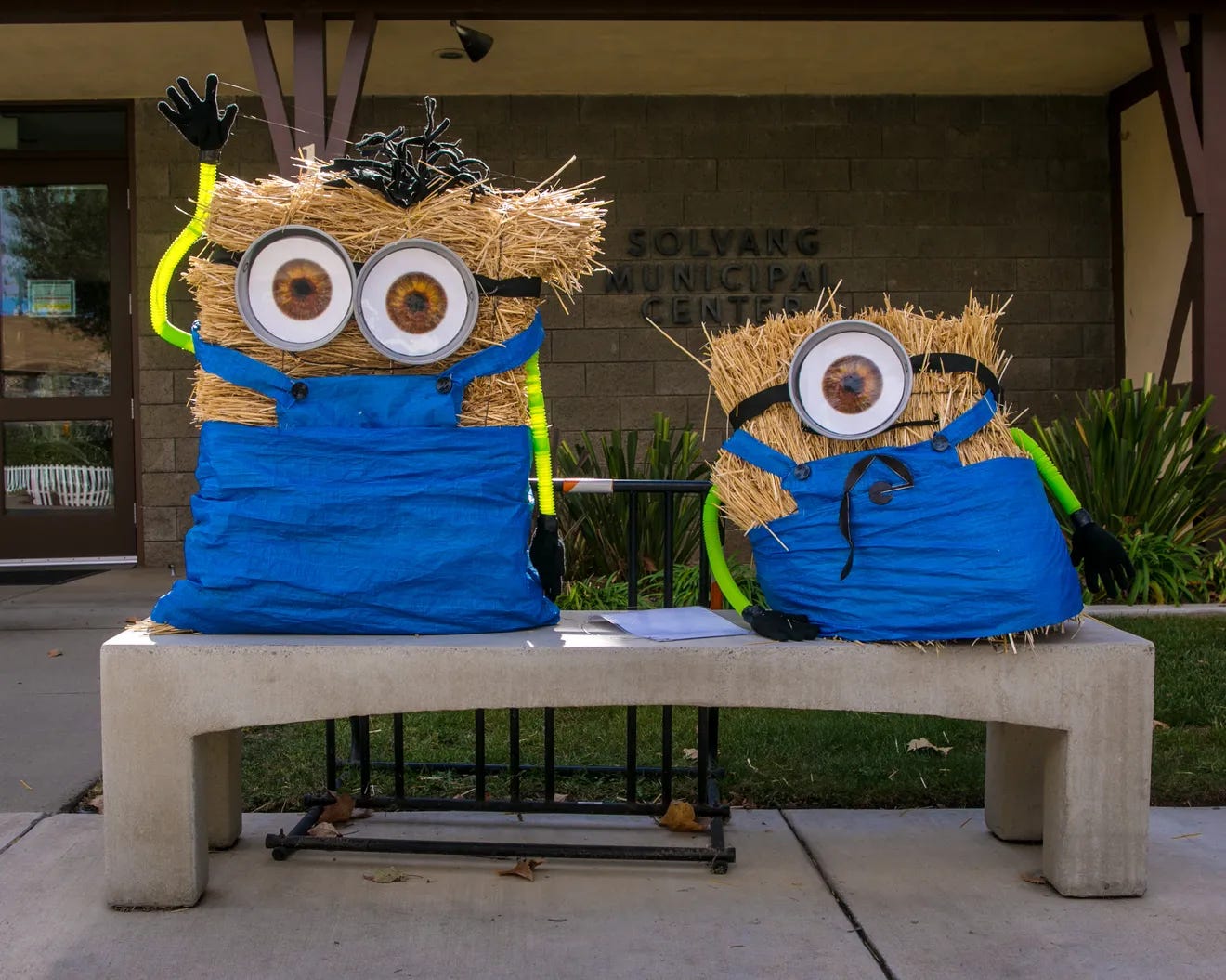Not official but still authentic: the future of bootleg is nounish
Bootlegs have historically been seen as detracting value from traditional brands. When building new brands, Nounish models instead recontextualise bootleg as a proof of concept for meme proliferation.
Noodling on bootleg in Japan 🍜
I recently travelled across Japan. Stops included Tokyo, Kyoto, Naoshima/Teshima, Fukuoka, and Kobe. It was my first time visiting since 2018. As I scurried between ramen stalls in each city, from the high streets of Shibuya to the back alleys of Daimyo, the abundance of shops selling bootleg (or bootleg-inspired) clothing stood out.
By “bootleg”, I’m referring to products using logos, patterns, designs and/or unlicensed IP from brands that aren’t their own or that of an approved collaborator. For example, the hoodie below features the Nike slogan, “GOT ‘EM” with an illustration of Bart Simpson wearing the rare Louis Vuitton x Nike Air Force 1 by Virgil Abloh (i.e. “AIR” and “LACET” [sic]). It was selling for ~$98 USD, which is more than the average Nike hoodie.
There were many stores dedicated to a bootleg aesthetic and overtly selling counterfeit goods, often at premium prices in high foot-traffic areas. There were custom bootleg, Nike-branded sneakers made from exotic leathers that were retailing for over $3k.
Bootleg as an aesthetic
Bootleg as an aesthetic isn’t a new trend. Its roots in signifying counterculture for popular fashion can be traced back to Dapper Dan in the 1980s and the year 2000, when Supreme was sued for their fake Louis Vuitton monogram and Bape released their Bape Sta knock-off of the Nike Air Force 1 (which has avoided any known legal action to this day edit: over 20 years later, Nike has now sued Bape). MARKET (fka Chinatown Market) built their whole brand around the aesthetic after releasing a series of hyped bootleg products in 2016. Only a few months ago, Dazed picked up on the trend to give a brief history.
MARKET was one of the brands that appeared to be regularly mixed in with the bootlegs, “customs” and “modern vintage” across different stores in Japan. After exploring a few of these stores in a row while walking through Shibuya, it was the (potentially licensed) images of Bored Apes on the jackets below that inspired overlapping thoughts with emerging themes in web3.
Proof-of-concept for meme proliferation models
There’s an iconic scene (below) in the The Devil Wears Prada, where Miranda Priestly (played by Meryl Streep) succinctly captures the power of meme proliferation to infiltrate culture and mainstream awareness.
In the clip she gives a monologue about how the colour cerulean trickled down from the fashion industry’s top designers through to random discount stores. Cerulean is the meme; a colour no one owned and anyone could use to co-opt the new fashion trend. The scene demonstrates how a simple colour can become a cultural touchstone and its use can spread to shape creativity, opinions and more across different demographics. Bootleg designer products are an example of this trickle-down effect when designer logos, symbols and designs are illegally reproduced for those who are indifferent to the authenticity or quality of the goods.
It can be argued the Bored Ape jackets are another example of the cheap, cerulean sweater, but each Ape NFT has its own IP license. As a collection, Bored Apes also lack an identifiable, reusable motif like a trending shade of blue. However Nouns DAO is positioned to benefit from a similar trickle down effect, through its iconic glasses (⌐◨-◨) and the collection’s artwork being available in the public domain as CC0. CC0 waives the copyright and related rights to the Nouns artwork. This allows others to bootleg (i.e. use, modify, and distribute) Nouns graphics without the need to seek permission from the DAO. MadHappy, a lifestyle clothing brand with LVMH as an investor and worn by celebrities like Jay-Z, recently released its own line of sweaters and hats using Nouns glasses and art. Unlike the negative connotations in high fashion, “bootleg” or unofficial Nouns merch builds upon the original concept and contributes to the ongoing evolution of the brand.
Proliferation potential can be unlocked without public domain
Virgil Abloh’s Off White is an early case study in utilizing a meme proliferation model to build a fashion brand. His early collections established a visual language that was ubiquitous in urban areas, such as pedestrian crossings and traffic signs. Fans would upload photos of stripes and signs to Instagram, Tumblr and other social platforms while tagging the brand and Virgil, making the imagery part of the viral brand identity. Virgil would often retweet, legitimizing the association and encouraging the content. It allowed people to participate and adopt the visual language without needing to own a high-priced item, while spreading Virgil’s ideas and designs to a wider audience. This was not with the intention of being public domain, as he later filed trademarks for the diagonal lines.
Similarly, despite not being CC0, the studio behind Despicable Me has been relaxed in its copyright enforcement of the Minions. While Universal/Illumination retain ownership of the valuable IP, this flexibility has allowed the minion characters to multiply across “murals, memes” and bootleg wedding rings on Etsy.
Anastasiia Fedorova, a curator of a 2020 exhibition at London College of Fashion on bootleg fashion items, was quoted as saying, “looking at bootleg culture makes you consider the desire for buying not just an item, but being a part of a creative universe, or the identity that that brand represents.” This captures the incentives that can drive meme proliferation in fashion and other industries. Virgil cultivated a community that felt included in the creative universe he was constructing. Web3 communities like Nouns are pioneering a paradigm shift towards adopting an open-source, omnipresent visual language. By dedicating the graphics to the public domain and removing barriers to their use, it upends traditional brand building models and allows an identity to be developed from the bottom up by empowering creators. Bootlegging can then be recontextualised as a mechanism that supports meme proliferation within this new paradigm. Bootlegs have historically been seen as detracting value from traditional brands, but Nounish models are proving the opposite can be achieved.


Subscribe and stand by for part two.



